Waste Collection in Commercial Waste Disposal
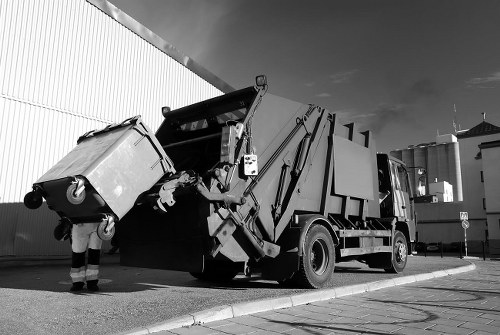
In today's rapidly evolving business landscape, effective waste collection plays a pivotal role in ensuring sustainable operations. Commercial entities generate a significant amount of waste, and managing it responsibly is not only a legal obligation but also a testament to a company's commitment to environmental stewardship.
Waste collection in commercial settings encompasses a broad spectrum of activities, from the disposal of office paper to the handling of industrial byproducts. Implementing efficient waste collection systems can lead to cost savings, enhanced reputation, and compliance with regulations.
Understanding the nuances of commercial waste disposal is essential for businesses aiming to minimize their environmental footprint. This article delves into the various aspects of waste collection in commercial settings, highlighting best practices, challenges, and innovative solutions.
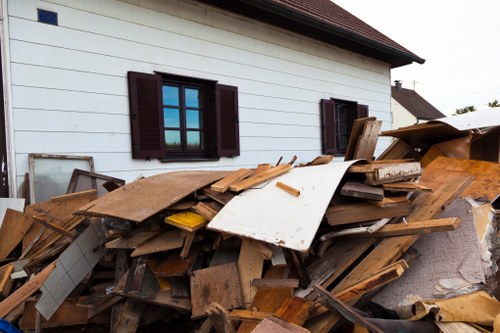
Introduction to Commercial Waste Disposal
Commercial waste disposal refers to the processes involved in managing waste generated by businesses, organizations, and institutions. Unlike residential waste, which typically includes everyday household items, commercial waste can range from office supplies to hazardous materials, depending on the nature of the business.
Effective waste disposal strategies are crucial for maintaining a clean and safe workplace. They also play a significant role in reducing the environmental impact of business operations.
Moreover, with increasing environmental regulations and a growing emphasis on corporate social responsibility, businesses are under pressure to adopt more sustainable waste management practices.
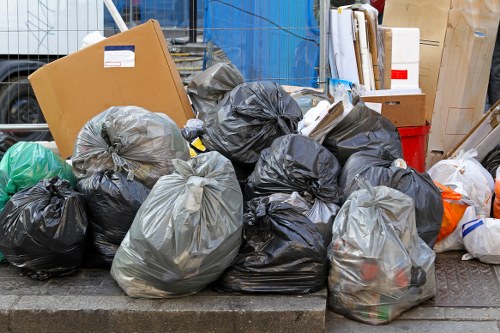
The Importance of Effective Waste Collection
Implementing an effective waste collection system offers numerous benefits to commercial entities. It not only ensures compliance with legal requirements but also promotes a healthier work environment.
Proper waste collection reduces the risk of workplace accidents associated with improper disposal of materials. Additionally, it minimizes the attraction of pests and prevents the spread of diseases.
From a financial perspective, efficient waste management can lead to significant cost savings by reducing disposal fees and optimizing resource utilization.
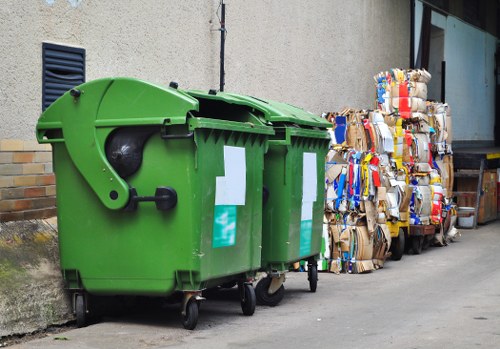
Types of Commercial Waste
Commercial waste can be categorized into several types, each requiring specific handling and disposal methods:
- General Waste: Non-hazardous waste such as office paper, packaging materials, and food scraps.
- Recyclable Waste: Materials like plastics, glass, metals, and paper that can be reprocessed and reused.
- Hazardous Waste: Substances that pose significant health or environmental risks, including chemicals, batteries, and electronic waste.
- Organic Waste: Biodegradable waste resulting from food preparation and other organic processes.
Understanding these categories is essential for developing tailored waste collection strategies that address the unique needs of each type.
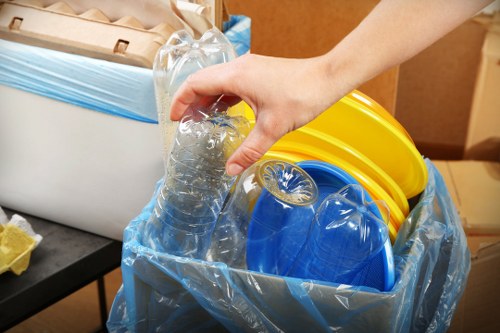
Waste Collection Methods
There are various methods employed in the collection of commercial waste, each suited to different types of businesses and waste streams:
- Bin Collection: Utilizing designated bins for different waste types, facilitating easy separation and disposal.
- Scheduled Pickups: Regularly scheduled waste collection services that ensure timely removal of waste materials.
- On-Site Compaction: Using compactors to reduce the volume of waste, minimizing the frequency of pickups.
- Automated Waste Collection Systems: Advanced systems that utilize sensors and conveyors for efficient waste segregation and collection.
Selecting the appropriate waste collection method depends on factors such as the volume of waste, types of materials, and available infrastructure.

Sustainable Waste Management Practices
Adopting sustainable waste management practices is imperative for businesses aiming to reduce their environmental impact. Key practices include:
- Waste Minimization: Reducing the amount of waste generated through efficient resource utilization and process optimization.
- Recycling Programs: Implementing systems to collect and process recyclable materials, diverting them from landfills.
- Composting: Converting organic waste into compost, which can be used for landscaping and other purposes.
- Energy Recovery: Utilizing waste-to-energy technologies to generate energy from non-recyclable waste.
These practices not only contribute to environmental sustainability but also enhance the corporate image of businesses.

Challenges in Commercial Waste Collection
Despite the benefits, commercial waste collection presents several challenges that businesses must navigate:
- Regulatory Compliance: Navigating the complex landscape of environmental regulations and ensuring adherence to standards.
- Cost Management: Balancing the costs associated with waste collection and disposal with budgetary constraints.
- Waste Segregation: Ensuring proper separation of different waste types to facilitate recycling and reduce contamination.
- Space Limitations: Managing waste collection within the spatial constraints of commercial establishments.
Addressing these challenges requires strategic planning and investment in appropriate technologies and training.

Technologies in Waste Collection
Advancements in technology have revolutionized the way commercial waste is collected and managed. Innovative solutions include:
- Smart Bins: Equipped with sensors that monitor waste levels and optimize collection schedules.
- Automated Sorting Systems: Utilizing artificial intelligence to segregate waste materials efficiently.
- Telematics: Tracking waste collection vehicles in real-time to improve route planning and fuel efficiency.
- Recycling Robots: Automating the process of identifying and sorting recyclable materials.
Integrating these technologies enhances the efficiency and effectiveness of waste collection processes.

Best Practices for Efficient Waste Collection
To optimize waste collection in commercial settings, businesses should adopt the following best practices:
- Conduct Waste Audits: Regularly assessing the types and quantities of waste generated to identify reduction opportunities.
- Employee Training: Educating staff on proper waste segregation and disposal protocols.
- Optimize Collection Schedules: Aligning waste pickup times with business operations to minimize disruptions.
- Collaborate with Waste Management Providers: Partnering with experienced providers to ensure reliable and compliant waste collection services.
Implementing these practices leads to streamlined operations and contributes to overall sustainability goals.

Environmental and Economic Benefits
Effective commercial waste collection offers both environmental and economic advantages:
- Reduced Carbon Footprint: Lowering greenhouse gas emissions through optimized waste transportation and processing.
- Cost Savings: Decreasing waste disposal fees by minimizing waste volumes and enhancing recycling efforts.
- Resource Conservation: Preserving natural resources by promoting recycling and reuse of materials.
- Improved Corporate Image: Demonstrating a commitment to sustainability, thereby enhancing brand reputation.
These benefits underscore the importance of investing in robust waste collection systems for commercial entities.

Future Trends in Waste Collection
The landscape of commercial waste collection is continually evolving, driven by technological advancements and shifting regulatory frameworks. Key future trends include:
- Increased Automation: Greater adoption of automated systems for waste sorting and collection.
- Data-Driven Decision Making: Utilizing data analytics to optimize waste management strategies.
- Circular Economy Models: Emphasizing the reuse and recycling of materials to create closed-loop systems.
- Sustainable Packaging: Encouraging the use of eco-friendly packaging to reduce waste generation at the source.
Staying abreast of these trends enables businesses to proactively adapt their waste collection practices.

Implementing an Effective Waste Collection Strategy
Developing a comprehensive waste collection strategy involves several key steps:
- Assessment: Conducting a thorough analysis of current waste generation patterns and collection methods.
- Goal Setting: Establishing clear objectives for waste reduction, recycling, and sustainability.
- Planning: Designing a waste collection system that aligns with business operations and goals.
- Execution: Implementing the strategy with the necessary resources and training.
- Monitoring and Evaluation: Continuously tracking performance and making adjustments as needed.
This structured approach ensures that waste collection efforts are effective and contribute to broader sustainability initiatives.

Conclusion
Waste collection is a critical component of commercial waste disposal, impacting both the environment and the operational efficiency of businesses. By adopting effective waste management practices, companies can achieve significant economic and environmental benefits, while also fulfilling their social and regulatory responsibilities.
Embracing innovative technologies and staying informed about emerging trends further enhances the effectiveness of waste collection systems. As the demand for sustainable business practices continues to grow, investing in robust waste management strategies becomes not just beneficial, but essential.
Contact us today to learn how we can help your business streamline its commercial waste disposal processes and achieve your sustainability goals.